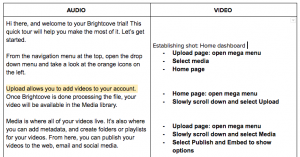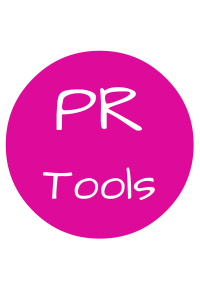Does the term “employee burnout” sound vague to you? The World Health Organization (WHO) considers it so serious that they added it to their Classification of Diseases (ICD-11) in 2019. While WHO clarified that it is not technically a medical condition, employee burnout signs appear often enough in practitioners’ offices that the problem has been given its own unique medical code. The cost of this syndrome across U.S. society is enormous: It’s estimated at $ 550 billion per year if you take into account the lost productivity and the expense of hiring new employees. Employees who frequently experience burnout are 2.6 times as likely to be actively seeking a new job, according to Gallup research. Feelings of “burnout” are responsible for 20 to 50% of employee churn, and burned out employees who stay around will have a negative effect on your business.
Keep an eye out for employee burnout signs
While disengagement and burnout aren’t exactly the same, they’re interconnected, as you’ll see in the following five warning signs. These are the five most prominent indicators of employee burnout that you should keep an eye out for:
1. Disengagement with work
The WHO describes the disengagement of burnout this way: “Increased mental distance from one’s job, or feelings of negativism or cynicism related to one’s job.” How will you know if your employees are disengaged? If you’re working with them directly, you may simply notice that their attention and energy are lagging. If your workforce is geographically spread out, however, you may not have face-to-face encounters often enough to make such a determination. In an average company, the statistics show that only 33% of workers are actively engaged in their work, which makes it harder to recognize the problem. It’s essential to measure levels of engagement on an ongoing basis, and you have many options for accomplishing this measurement. You can do it directly, by means of pulse surveys, or indirectly, through many metrics such as worker productivity or company profits.
2. Poor concentration and exhaustion
Worker exhaustion is a clear employee burnout sign. Ask yourself, “Are my teammates exhausted?” One way to know is to track absenteeism. Exhaustion can be due to numerous causes, and a discouraged worker may not immediately know whether their feeling of tiredness arises from an organic cause or from employee burnout. Gallup research reports that employees who frequently experience work burnout are “63% more likely to take a sick day and 23% more likely to visit the emergency room.” Furthermore, absenteeism costs businesses an average of $ 3600 per year for every hourly worker, and $ 2650 per year for every salaried worker. Not only that, but one survey of 94,000 workers found that $ 84 billion was being lost every year due solely to absent employees.
3. Decreased productivity
The WHO phrases this as “reduced professional efficacy.”, and an extensive research review on the topic of burnout notes “reduced personal accomplishment or inefficacy, that is, a feeling of personal or professional inadequacy as well as reduced productivity and coping skills.” According to another WHO report, the global figure for lost productivity due to anxiety and depression is $ 1 trillion U.S. dollars.
4. Irritability
Being irritable, or quick to take offense, is sometimes combined with an inability to concentrate An irritable employee can make life difficult for coworkers, but they can do serious damage to customer relationships. One study shows that 74% of call center agents are at risk for burnout. And the risk is “severe” for 30% of those individuals. It’s not possible for an employee to provide great service to customers when he or she is feeling out of sorts themselves.
5. Disruption of eating or sleeping habits
Studies of over 4,000 apparently healthy employees “showed burnout as a significant predictor of new cases of insomnia and an increase in insomnia levels, respectively,” according to a study published by the National Institutes of Health. The Mayo Clinic reminds us that a whole cluster of related physical problems can represent employee burnout signs. These may include stomach problems, headaches, and increased use of alcohol or drugs in order to try to feel better.
All the employee burnout signs listed above are interconnected: An employee who is exhausted and lacking concentration is going to be less productive. The result may be increased pressure due to poor performance, which will make the person feel more irritable. This may in turn lead to stress, digestive problems and depression, and they may end up calling in sick or being absent. This cloud of symptoms needs to be addressed with some strong medicine.
How to fix or avoid employee burnout
Gallup points out that managers are responsible for 70% of employee engagement. Since employee burnout signs and disengagement are so closely related, the strategies that reduce burnout also have the effect of increasing engagement.
Listen closely to your employees
The primary way to keep your employees upbeat and engaged is to put employee voice front and center. Gallup reports, “Employees whose manager is always willing to listen to their work-related problems are 62% less likely to be burned out.” When companies listen to their team with a continuously open channel, and take action on feedback, employees feel heard. Move beyond your annual survey to frequent pulse surveys and always-on workplace chatbots.
Empower employees
When you trust employees and empower them to make changes in their work routines, and to freely bring issues to their manager, you’re heading off the dangers of employee burnout. The World Health Organization advises “involving employees in decision-making, conveying a feeling of control and participation” as a way of promoting mental health in the workplace. Gallup advises, “Managers need to ask and listen to employees and work with them more like a coach and less like a boss,” and “You may not need daily 30-minute check-in conversations, but you should connect with them consistently. Use phone calls, email, instant or text messaging, or videoconferencing.”
Recognize and reward efforts
Recognizing and rewarding your employees is one of the most effective ways of responding if you notice any employee burnout signs. When employees are feeling overwhelmed, they want to feel seen by the people they work with; the human component in the workplace is crucial. Mayo Clinic advises employees who are feeling burned out to seek support. They say, “Whether you reach out to co-workers, friends or loved ones, support and collaboration might help you cope.” Frequent recognition from peers as well as managers can provide that strong sense of support. Among its recommended interventions to promote workplace mental health, WHO advises “recognizing and rewarding the contribution of employees.”
Focus on employee health and well-being
When you create a program to foster your employees’ health and well-being, you’ll be addressing the root causes of any employee burnout signs you may have noticed. You’ll also be helping your people to focus on how well they are eating, sleeping, and relating to others. HR Daily Advisor points out that wellness programs can be helpful if they’re sustained and authentic. They point out that access to mental health care and a meditation program will be more meaningful than superficial fixes like healthier snacks.
Employee burnout exists
A recent Gallup study found that more than one-quarter of employees reported feeling burned out “very often” or “always.” Almost another half of workers (48%) say they “sometimes” feel burned out on the job. Together, those figures mean that more than 75% of workers are spending some of their work days in a condition of burnout.
To learn more about what you can do to make sure your company isn’t part of these statistics, access our webinar, “Employee Burnout: Signs and Action Steps to Prevent or Mitigate Its Impact.”
Business & Finance Articles on Business 2 Community
(26)







